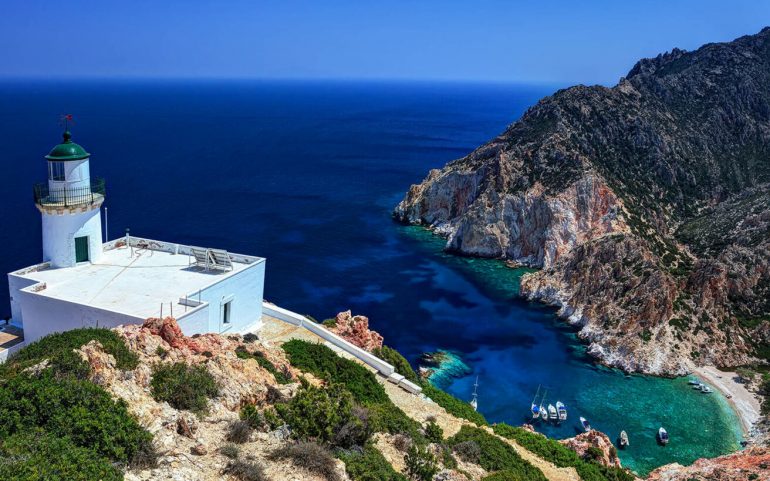The largest uninhabited island in Greece remains a mystery because it is deserted today.
It is as large as Heraklion (18 square kilometers) and is much larger than Donoussa (13 sq.m.). But while the two pearls of the Small Cyclades are inhabited by about 150 people, here one will not meet a permanent human presence.
Except maybe for a couple of shepherds who live on a semi-permanent basis now on the island. As for the island itself, only those who have been to Kimolos and Milos know it, as they see it opening on the horizon.
For Polyaigos the reason, a really unexplored part of our country, despite the fact that it has canals of natural beauty and some blue waters coming out of Photoshop.
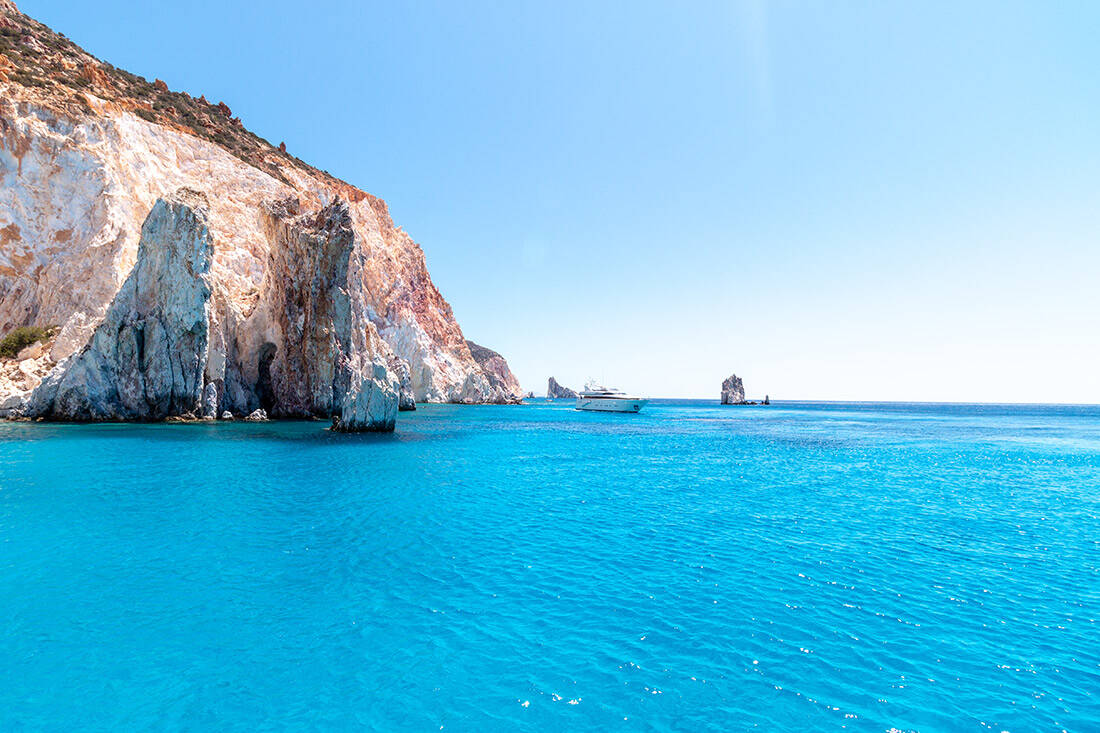
Only ibex live there, hence its name, as it is a virgin pasture without human presence. However, it is also an important habitat of the Mediterranean, as the seal gives birth there Monks-Monks.
A breath from Kimolos is and is also a volcanic island that the boats know well, as stopping and diving there is imperative. But the tourists of the neighboring islands also know it, who may get here with a one-day cruise to enjoy this incredible color of the waters.
The island, the largest uninhabited island in the Aegean, but hides other beauties, with or without human intervention…
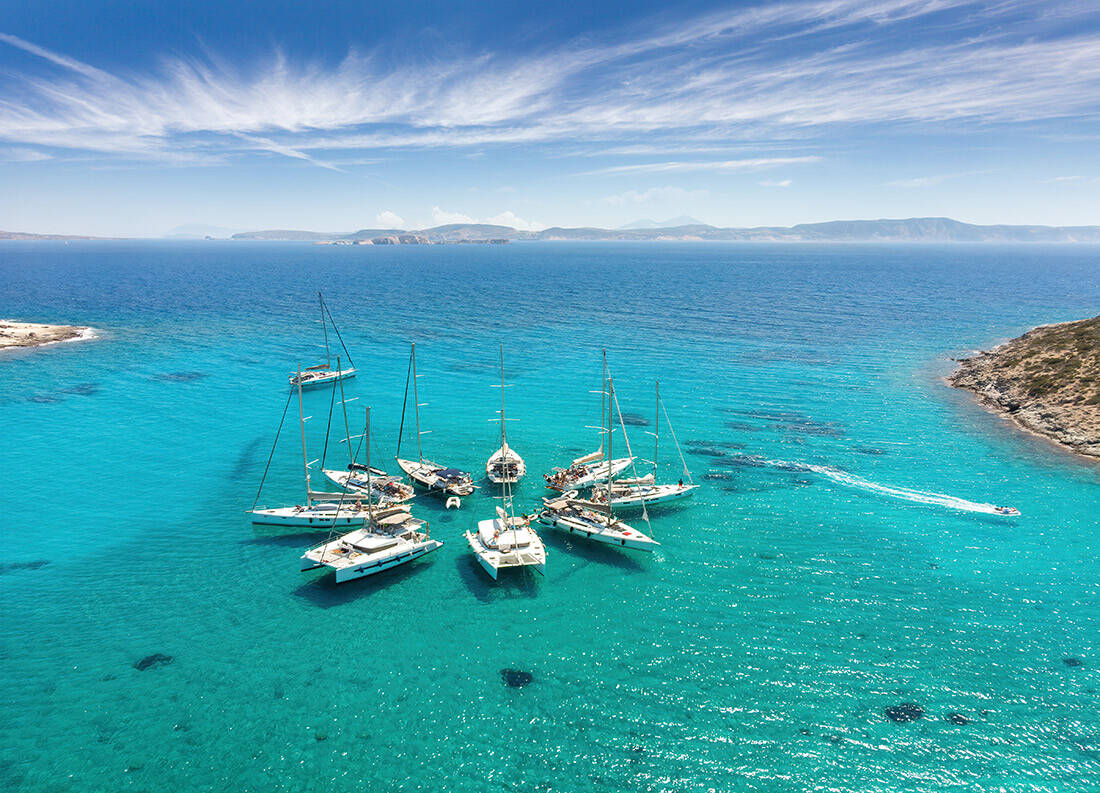
Polyaigos or Ipolivos (and Polivos) is a real earthly paradise forgotten by gods and humans. A well-hidden secret of our country that you may stumble upon at some point.
"Polynesia of Greece" you will hear it said and you really should not wonder why. The uninhabited Cycladic island is located a breath away in the southeast of Kimolos. A little further is the Apple, Sifnos and Folegandros.
As for its property status, the largest part of the 18 square kilometers belongs to the church of Kimolos, Panagia Odigitria, donated by the bequest of Ioannis Stavros Logothetis.
The Bequest Management Committee leases parcels to stockbreeders, including "dilapidated and dilapidated houses, scattered in various places within the boundaries of the Bequest property".
The Holy Temple of Hodegetria Kimolos includes the ruined buildings of the monastery and the church of the Assumption of the Virgin (Panagia Polyviatissa), a basilica with a dome built in 1622, as well as a warehouse opposite the temple and a ruined house on another part of the island.
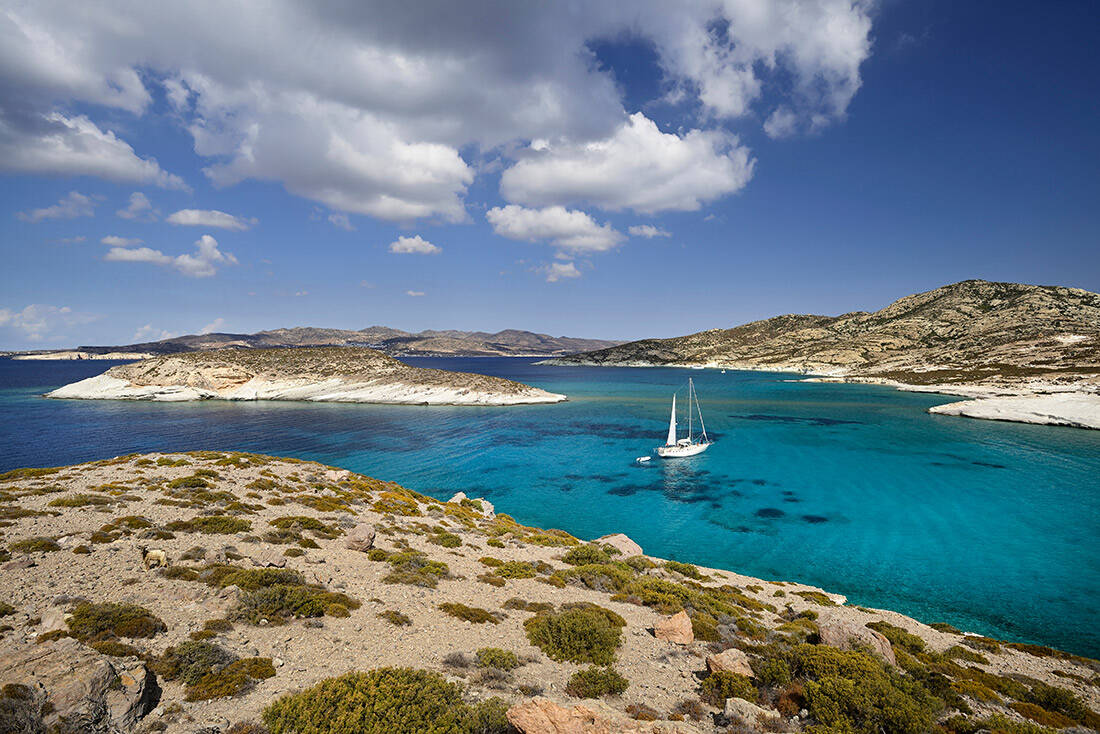
Polyaigos is used as a vast pasture and fishing ground, which has an imposing lighthouse on its east side. There, on Cape Maskoula, stands the 1898-meter stone lighthouse, which has been climbing since 9, climbing to a total height of 138 meters to dominate that corner of the island.
In the eastern part of which we find the famous Manolonisi and in the south the islets of Kalogeri, the most photographed landscape of the area.
Human activity is certified by both quarries seen in Polyaigo, from where they extracted the volcanic tracheitis to make millstones for windmills and olive mills…
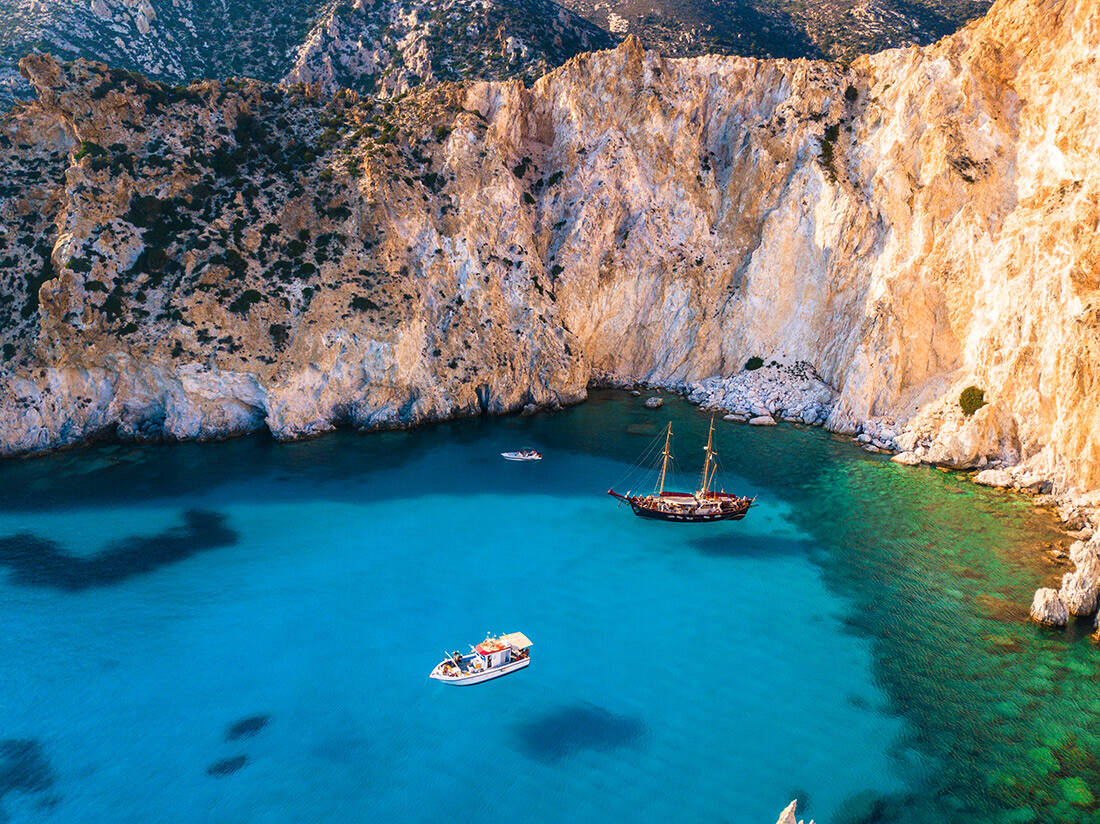
What fascinates in Polyaigos, apart from the clear blue waters and the beaches that look like swimming pools, are the very high and wild rocks with the intricate formations. And "Meteora of the Aegean "you will hear them call Polyaigos, as the landscape is very typical.
These man-made sculptures are again the work of the rich volcanic activity of the area. Huge rocks alternate with even more imposing formations running along the coastline of the island. The only break, where the lines become softer and softer to the eye, on the small beaches of the island.
The relief is rough and awkward and the only thing that interrupts it is this plain in its center. Polyaigos, however, not only attracts the eye with its incredible geological formations, but also with its pristine nature.
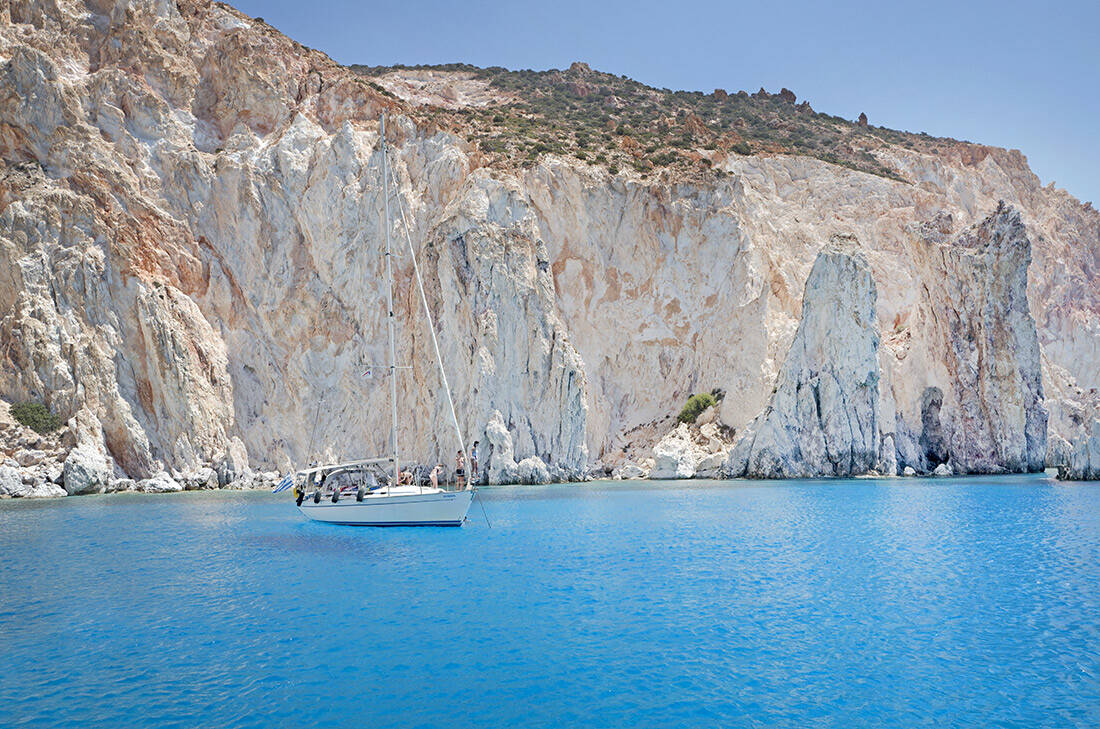
The island has a huge geological and ecological importance, as the absence of tourist activity has left it unspoiled for its nature and creatures.
There you will find rare endemic species of fauna (such as the viper of Milos, the blue lizard, the vulture and the black peregrine falcon), even endangered animals. But also 32 endemic species of flora.
This is where the Mediterranean Monk-Monk seal breeds, which is why the island is included in the protected network Natura 2000 as an important habitat in Europe. What stands out in terms of living conditions, however, are the hundreds of ibex that make their presence felt everywhere…

Polyaigos was inhabited from ancient times (Mesolithic or Neolithic Age) until relatively recently, with its history being essentially intertwined with Kimolos. Its rich mineral wealth (it still has gravity deposits today) has been a point of friction between its neighbors for a long time.
We know that Kimolos and Milos embarked on great judicial adventures in 416 BC. for the ownership of the island. They had to wait until 338 BC. for the court of Argia to rule that administratively it ultimately belongs to Kimolos, settling the historical backlog.
Polyaigos was not always a desert island, everything else. In recent years it has always been honored by shepherds and fishermen and there was a permanent population even in the early 1970s.

More than 150 people lived in the settlement of Panagia t 'Avlaki and the ruins of 15 houses in the village still testify to this.
It was completely uninhabited for many years and that is exactly how it appears in the 2001 census. However, in 2011, in the official census of that year, a couple of cattle breeders declared it as their permanent residence.
The cattle breeder is "semi-permanent" there, as he spends a good part of his time on the island with his wife, but they often come and go to Kimolos with their boat for supplies. So Polyaigos became recently… almost uninhabited!
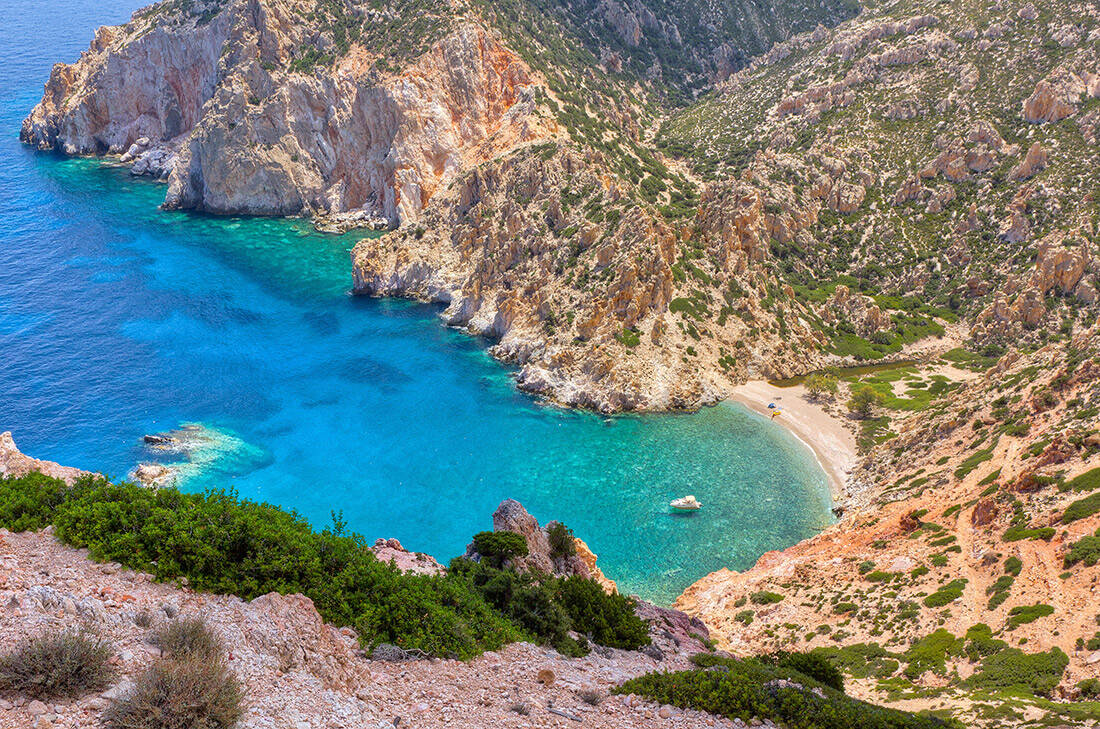
Hospitable bays, windless coves and hidden caves make up the coastal paradise that Polyaigos has to offer. The landscape is wild and very exotic, with the sea taking on all colors from blue to turquoise.
If you do not have your own boat, you pass by boat opposite the Argentiera, as the Venetians called Kimolos from its silver rocks, and you land in beautiful coves with sandy beaches and intoxicating waters. Itineraries usually have from both Milos and Sifnos and by Folegandros.
If you arrive by private boat, then you have a bouquet of untouched coves and beaches to enjoy real Polynesia! Kato Mersini, (Above) Mersini, Hochlakia, Galazia Nera (one of the most impressive beaches of the Cyclades), Panagia Beach, Faros Bay and countless coves in the northwest are waiting to welcome you in their crystal clear white waters and.

In Ammoura (or Ammoura), in the Bay of the Lighthouse, you will see ibex walking on the shore! The play of water with the rocks has given birth to a series of impressive caves to explore in the south, in the blue-green waters here that also look fake.
Natural beauty without human intervention, its bluest waters Aegean and an extremely tropical setting welcome the visitor to an island that remains unknown and unexplored. It is busy only for private boats, which give a cosmopolitan character in the absolute wilderness.
Polyaigos turns every summer into a paradise anchorage for Greek and foreign cruisers sailing in its transparent waters with their luxurious mega yachts. It acquires human voices for a few months and then returns to its absolute silence.
It is a place that only if you see with your own eyes do you think it exists…
